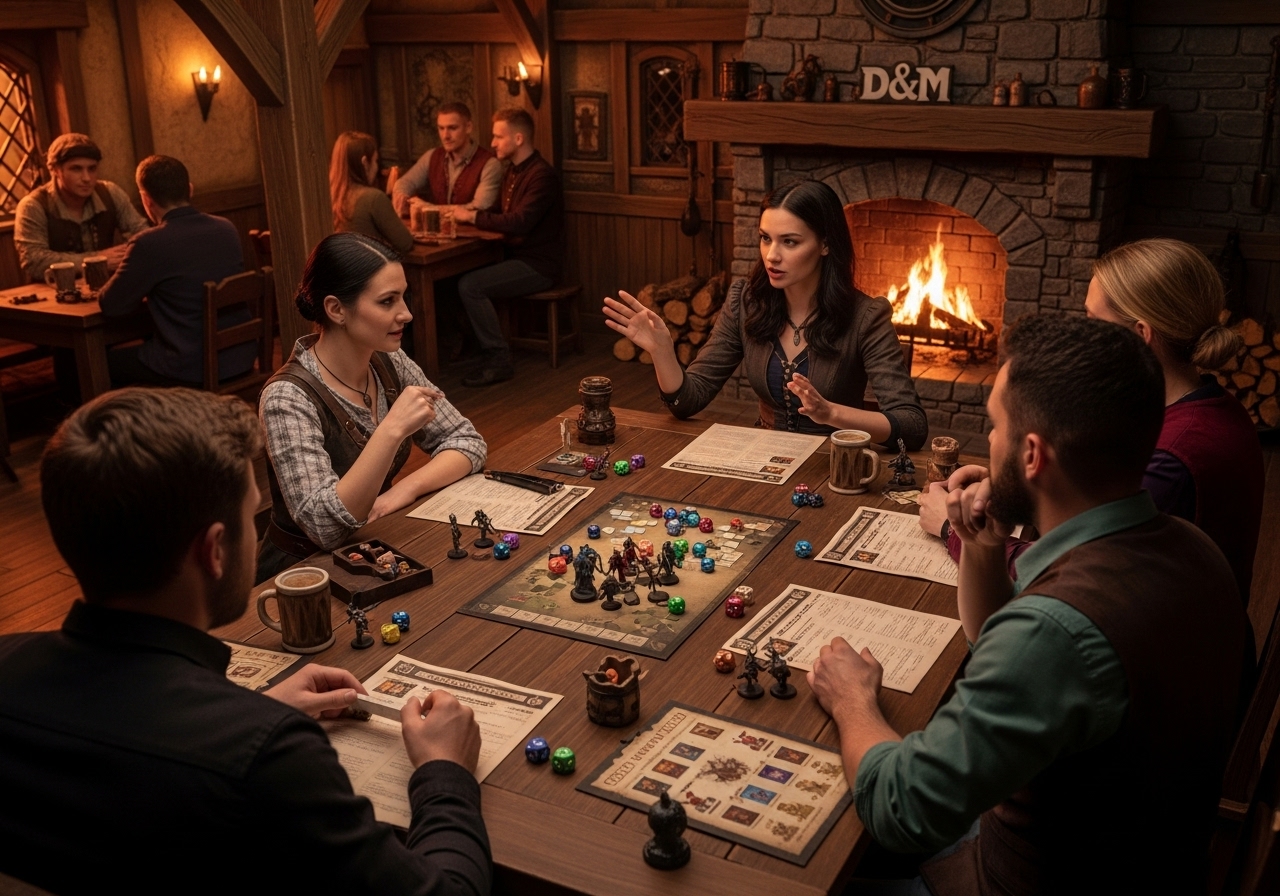Rhythm of Play

The three main pillars of D&D play are social interaction, exploration, and combat. Whichever one you're experiencing, the game unfolds according to this basic pattern:
-
The Game Master Describes a Scene. The GM tells the players where their adventurers are and what's around them (how many doors lead out of a room, what's on a table, and so on).
-
The Players Describe What Their Characters Do. Typically, the characters stick together as they travel through a dungeon or another environment. Sometimes different adventurers do different things: one adventurer might search a treasure chest while a second examines a mysterious symbol engraved on a wall and a third keeps watch for monsters. Outside combat, the GM ensures that every character has a chance to act and decides how to resolve their activity. In combat, the characters take turns.
-
The GM Narrates the Results of the Adventurers' Actions. Sometimes resolving a task is easy. If an adventurer walks across a room and tries to open a door, the GM might say the door opens and describe what lies beyond. But the door might be locked, the floor might hide a trap, or some other circumstance might make it challenging for an adventurer to complete a task. In those cases, the GM might ask the player to roll a die to help determine what happens. Describing the results often leads to another decision point, which brings the game back to step 1.
This pattern holds during every game session (each time you sit down to play D&D), whether the adventurers are talking to a noble, exploring a ruin, or fighting a dragon. In certain situations-particularly combat-the action is more structured, and everyone takes turns.